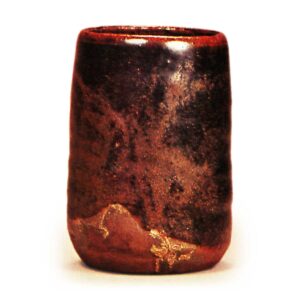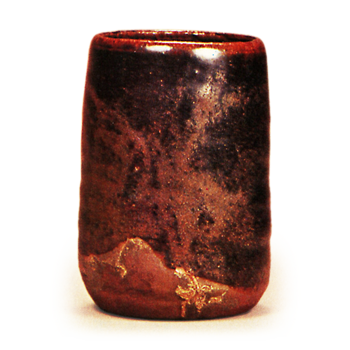
Chungking specialties. Kuniyaki tea caddy, Satsuma ware. It is also known as “Yado no ume” (plum blossoms at an inn), so named because it once belonged to Goto Sanzaemon, a merchant in Kyoto. The name “Yado no ume” is derived from a poem by Taira Kanemori in the Shunbu section of the “Jikagishu” (Collection of Anthology of Anthropology and Anthropology), “Wagashuku no ume no tachibi ya mienzakura shiminokotsuwa kunagimasemasareru,” or the meaning of the poem. In the “Meimono-ki” (Record of Famous Articles), it is written, “Goto Satsuma-yaki was originally produced by Kyoto merchant Goto Sanzae, then by Kutsuki Iyomori, then by Kamio Yamatomori, then by Mizuno Izumi no Mamoru, and finally by Tekizen (Matsudaira Noriura), and is said to have been made in the middle of the Edo period. The rim of the mouth is slightly held by a yellow glaze. The body is covered with a white glaze with a bluish tinge like a cloud on top of a black glaze. The body has three wide horizontal lines on the potter’s wheel. The hips are slightly stretched, and the clay below the base is vermilion mud color. It entered the hands of Shinjuro Konoike in Osaka in 1826, and was delivered to the Inoue family in July 1903. It is now in the collection of the Nezu Museum. (Taisho Meikikan).



